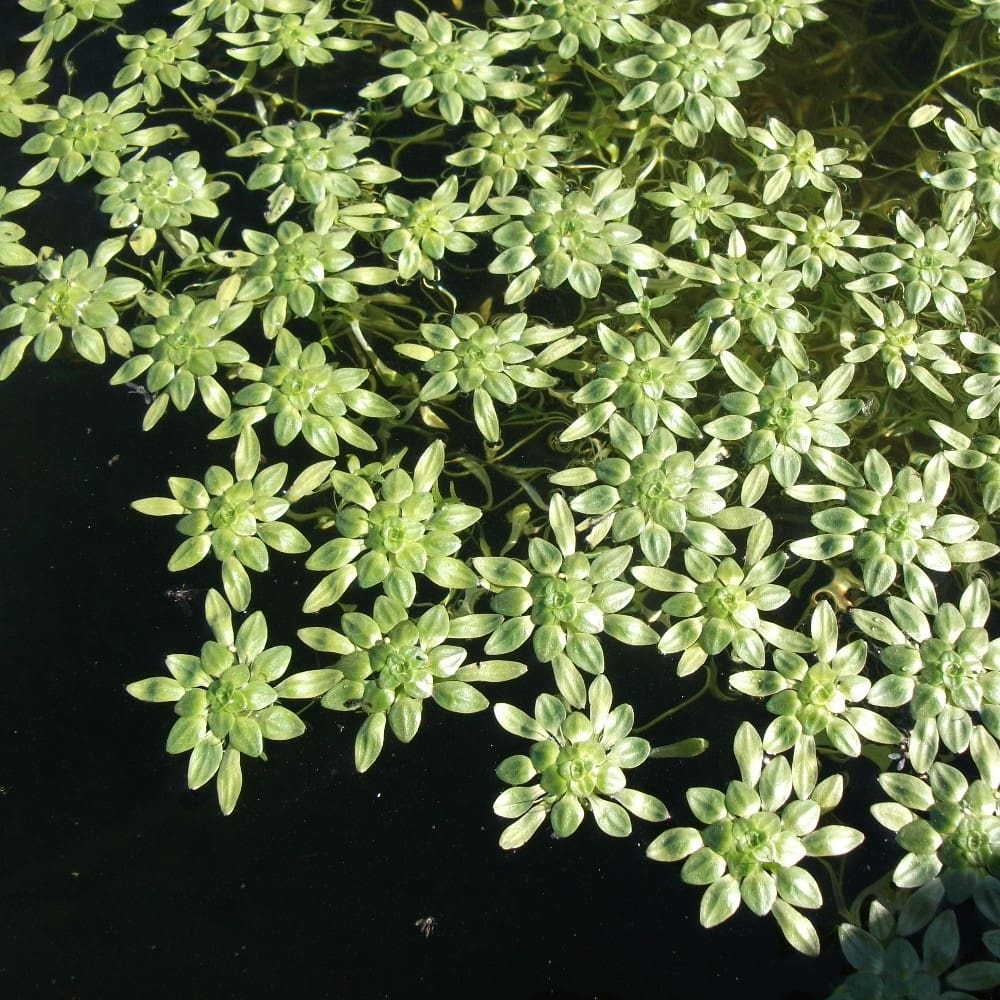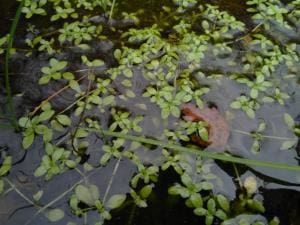As an esteemed reader with a vested interest in botany or simply an individual with a burgeoning curiosity about the captivating realms of aquatic horticulture, your attention is undeniably drawn to an intriguing title, “What Is The Aquatic Plant Marsh Water Starwort.” Likely a term that might seem unfamiliar, this piece promises to expand your botanical understanding by elucidating the concept of a Marsh Water Starwort – an aquatic plant often overlooked in discussions of aquatic biodiversity. This article is scribed with an objective to enrich your knowledge and appreciation for this fascinatingly subtle, yet ecologically significant aquatic greenery.
Overview of Marsh Water Starwort
Definition of Marsh Water Starwort
Marsh Water Starwort, a charming gem of aquatic plant life, is more formally known as Callitriche palustris. This small aquatic plant is a part of the family Callitrichaceae. Its genus name, Callitriche, is derived from the Greek words ‘kalos’, meaning beautiful, and ‘thrix’, referring to hair – an allusion to the delicate threads of its roots and stem structures.
Scientific Classification
In the taxonomy of biological organisms, Marsh Water Starwort, as mentioned before, belongs to the Callitriche genus and the Callitrichaceae family. Its accepted precise scientific name is Callitriche palustris. This classification is a part of the order Caryophyllales, the class Magnoliopsida, and the kingdom Plantae, which includes all green plants.
Habitat and Distribution
Marsh Water Starwort, as its name suggests, is found primarily in marshes and wet places with standing or slow-moving water. It thrives in environments including swamps, wet meadows, shallow ponds, and the muddy edges of streams and rivers. The distribution of Marsh Water Starwort spans across various regions in North America, Europe, and parts of Asia.
Physical Appearance of Marsh Water Starwort
Roots and Stem Structure
The roots of Marsh Water Starwort are thin and fine, splaying outwards to anchor the plant in the underwater soil. Its stem is typically slender and stringy, branching out widely in a star-like structure, which is the very attribute that gives the plant its name.
Leaf Characteristics
The leaves of Marsh Water Starwort are small and typically oval or oblong. They have a vibrant green hue and are arranged oppositely along the stem, often in pairs. The underwater leaves are likely to be longer and more slender compared to those on the surface.
Flower and Seed Description
Marsh Water Starwort flowers are rudimentary and nearly imperceptible, often appearing as tiny white specks in the leaf axils. When it comes to seed production, this plant species features small, rounded fruit that each encloses a single seed.

Growth and Life Cycle of Marsh Water Starwort
Typical Life Span
Marsh Water Starwort is a perennial plant, meaning it typically lives for more than two years. With proper care and suitable conditions, this species can thrive and regenerate for several seasons.
Growth Conditions and Factors
This plant species prefers shallow, still, or slow-moving water. It can tolerate clayey, loamy, or sandy soil, showing adaptability to soil types that are neutral, alkaline, or quite acidic. While it has modest nutrient needs, enriched soil can boost its growth and development.
Reproduction and Propagation Methods
Marsh Water Starwort propagates sexually through seeds and asexually through stem fragments. It can self-fertilize, and the seeds deposited in water or moist soil germinate to produce a new plant. Fragmentation also plays a significant role in reproduction, with broken stem parts capable of growing into new individuals.
Habitat Requirements
Water and Soil Conditions
Marsh Water Starwort thrives in standing or slow-moving water bodies. It can cope well with various soil types ranging from sandy to clayey, and from acidic to alkaline. However, for optimal growth, water and soil with a reasonable nutrient provision are preferable.
Preferred Temperature and Climate
Being a sturdy and flexible plant species, Marsh Water Starwort can withstand a range of temperatures. Nevertheless, it shows a preference for mild to moderately warm climes. This plant can also tolerate occasional freezing spells and colder weather patterns.
Sunlight and Shade Requirements
Marsh Water Starwort is a truly versatile species, capable of growing under either full sun or partial shade. Nevertheless, it typically prefers locations with plenty of sunlight for optimum photosynthetic activity, which directly influences its growth and development.

Cultivation of Marsh Water Starwort
Planting and Care Guide
To cultivate Marsh Water Starwort, plant the roots or stem fragments in the desired location and make sure it stays submerged in water. Regularly remove any unwanted algae or debris that may compete for light and nutrients. This plant does not require regular trimming but can be pruned to control growth.
Disease and Pest Management
Marsh Water Starwort is relatively resistant to most common aquatic plant diseases and pests. However, it is advisable to watch for signs of infestations or disease and to use suitable biological, chemical, or physical treatments if necessary.
Harvesting Techniques
Marsh Water Starwort can simply be uprooted or the stems snipped off when harvesting. It is advisable to harvest the plant when it is in an active growth phase, typically from late spring to early fall.
Ecological Role of Marsh Water Starwort
Contribution to Ecosystem
Marsh Water Starwort, with its dense growth, provides a habitat and food source for various aquatic creatures. It is instrumental in stabilizing pond and riverbank soil and in oxygenating the water, which is vital for aquatic life. This plant also aids in nutrient cycling within the ecosystem.
Interaction with Wildlife
Marsh Water Starwort can be a food source for waterfowl and other animals. Its dense growth can serve as a productive breeding site and protective hideout for various fishes and invertebrates.
Threats and Conservation Status
The survival of Marsh Water Starwort is primarily threatened by habitat degradation due to pollution, drainage, and land conversion. Facilitating its growth in aquatic habitats can significantly contribute to the conservation of this species and the biodiversity it supports.

Marsh Water Starwort in Aquascaping
Role in Aquariums and Ponds
Marsh Water Starwort is an excellent choice for aquascaping due to its aesthetic appeal and easy maintenance. It provides refuge and breeding sites for small fishes and aquatic invertebrates. Moreover, by oxygenating the water, it contributes to maintaining a healthy aquarium ecosystem.
Aesthetic Appeal
Marsh Water Starwort, with its vibrant green color and star-like shape, adds great visual interest to water bodies. Its dense growth can create an attractive underwater “carpet,” enhancing the overall aesthetics of the aquarium or pond.
Maintaining Marsh Water Starwort in Tanks
When cultivated in an aquarium, Marsh Water Starwort requires plenty of light and a reasonable amount of nutrients. To maintain its health, it may be necessary to prune it occasionally to manage its growth and to remove any discolored or decaying parts.
Medicinal Uses of Marsh Water Starwort
Historical and Traditional Uses
While not extensively documented, some traditional medicinal systems have used Marsh Water Starwort for various health conditions. Due to its high nutrient content, it has been consumed as a food source and is known to possess antioxidant properties that can be beneficial for health.
Modern Medicinal Applications
Contemporary research in phytotherapy is exploring potential medicinal applications of Marsh Water Starwort. While further investigation is needed, existing studies suggest it may hold promise in areas like antioxidant production and natural disease prevention.
Research Studies and Findings
Currently, few scientific studies have explored the potential medicinal applications of Marsh Water Starwort, necessitating further comprehensive research. Nevertheless, the limited evidence available hints at its potential as a natural antioxidant and its possible role in preventing certain disorders.

Nutritional Value of Marsh Water Starwort
Vitamin and Mineral Content
Marsh Water Starwort is rich in essential vitamins and minerals, including Vitamin C, calcium, and iron. These nutrients play vital roles in body functioning, contributing to overall health and well-being.
Protein and Fiber Composition
Protein and fiber content in Marsh Water Starwort could be beneficial for maintaining satiety, aiding digestion, and for overall health. The exact composition varies based on environmental factors and growth stage.
Potential Health Benefits
Given its nutritional richness, consuming Marsh Water Starwort could offer health benefits such as boosting the immune system, supporting bone health, promoting good digestion, and helping to maintain a healthy metabolism.
Potential Risks and Concerns
Poisonous or Toxic Effects
While Marsh Water Starwort is generally considered safe, individual responses can vary, and allergies may occur in susceptible individuals. Its consumption is not recommended without a thorough understanding of its biological effects or the guidance of a healthcare provider.
Invasive Species Concerns
In certain aquatic environments, unchecked growth of Marsh Water Starwort may choke out other native plants and disrupt biodiversity balance. Care should be taken to not let it become an invasive species.
Legal and Regulatory Status
Some regions may have regulations concerning the cultivation and propagation of Marsh Water Starwort, especially considering its potential to become invasive. Before introducing it in a new environment, it is advisable to check with local regulation bodies regarding legal permissions and potential restrictions.
